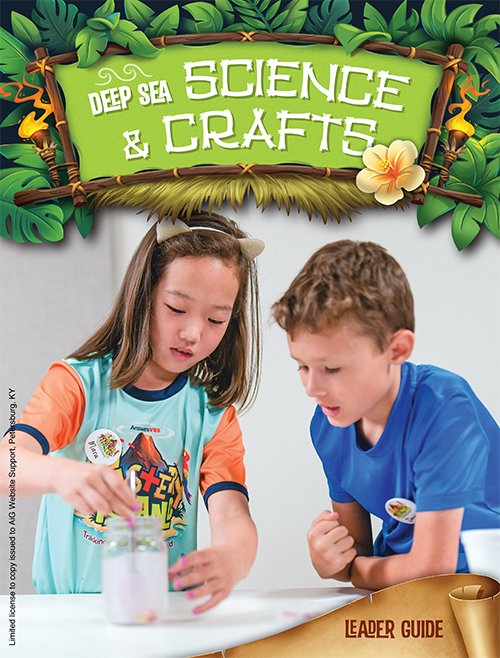Diaper Duty
Day Three Experiment
on November 22, 2021; last updated December 1, 2021Materials (for every group of 3–4 students)

- 5 different diapers, each a different brand but the same size, plus 1 extra to be cut open
- Scissors
- 100-ml graduated cylinder or 1/8 c. measuring cup
- Bucket of water
- Plastic spoons, 1 per child, plus 1 for sodium polyacrylate dish
- Dropper or transfer pipette
- Dish to hold sodium polyacrylate
- Diaper Duty Record Sheet
Pre-Prep
Place bucket of water and all the supplies on each table. Using scissors, open up one diaper to collect the sodium polyacrylate (the gel beads inside the diaper) and place them into a dish on each table for the kids to use. Photocopy the Diaper Duty Record Sheet.
Teaching Tie-In
Have any of you ever been to an island? Take responses. If you could visit any island, which would you choose? Take responses.
Islands are surrounded by water—lots of water! In fact, about two-thirds of the surface of the earth is covered by water. That’s a lot of water. If you smoothed out all the land on earth (raised up the ocean bottoms and flattened the mountains), the water on the earth would cover all the land to a depth of 8,000 feet!
One area in the ocean, called Challenger Deep, is over 35,000 feet deep! If you put Mount Everest into this trench, its top wouldn’t even stick out of the water! Did you know there’s a Bible verse in Micah 7:19 that tells us God has such compassion on his children that he will cast all of their sin into the depths of the sea? Wow!
Does that mean God actually takes a sin, like a lie, and he actually throws it way down deep in the sea? Pause for answers. No, but it’s a picture of how deep and final God’s forgiveness of our sin is. Remember—the sea is very, very deep—miles deep in places. So this pictures our sins being cast into a deep sea where they can never be brought up again. That is great, great love, and great, great forgiveness. Let’s thank God for being such a forgiving, loving God! Do so.
Now, since we’re talking about water, let’s try a crazy experiment to test how much water a diaper can hold!
Class Time Directions
Each group should have five diapers, a bucket of water, and either a 100-ml graduated cylinder or 1⁄8 c. measuring cup for the first part of the activity.
Do any of you have little brothers and sisters who wear diapers? Pause for responses. Then you’ve probably seen them walking around in a diaper that’s heavy, huh? I wonder how much a diaper can really hold?
Ask the groups to predict how much water a diaper will hold. Have them record their guess on their Diaper Duty Record Sheet. Then instruct them to take their graduated cylinder or measuring cup and fill it with water. One student holds the diaper and another pours. Instruct the groups to add up the amount they were able to put in the diaper. Continue to do the same thing with the other brands. Ask them if there are differences in brands.
The reason a diaper can hold so much water is it contains these little gel beads that are a special substance called sodium polyacrylate. Do you know what’s cool about sodium polyacrylate? It loves water! When a substance loves water like this, it’s called hydrophilic. Because sodium polyacrylate loves to cling to water, it holds the water in the diaper and tries to keep it from spilling out.
For part two, instruct each student to get a plastic spoon and a dropper. Ask each student or group of students to count the number of drops of water the spoon can hold before it spills over the edge, and record their results on the record sheet. Dump the water back in the cup. Then ask each group to spoon a pinch of sodium polyacrylate onto their spoon. Again, count the number of drops of water the spoon can hold and record the results. Compare the difference.
What you see in this experiment is that the waterloving sodium polyacrylate allows you to hold more water on the spoon. It’s a great thing God designed sodium polyacrylate. And it’s a good thing diapers have sodium polyacrylate in them to keep diapers from leaking everywhere! Otherwise, yuck!
Tip Corner
- The test churches did just the first part of this experiment because they did another experiment as well during the science rotation. The kids loved it!
- The kids at the test churches tended to dump a lot of water in a hurry if using the graduated cylinders, so we advise using the 1/8 c. measuring cups if possible.
- Science terms introduced today are sodium polyacrylate and hydrophilic.
Related Downloads
Diaper Duty Record Sheet
PDF DownloadMystery Island Deep Sea Science & Crafts
Kids love science experiments and crafts! This guide contains everything you need to coordinate the daily science experiments and crafts for all age groups.
Browse Kids Book- © 2024 Answers in Genesis
- Privacy Policy
- Contact
- About

